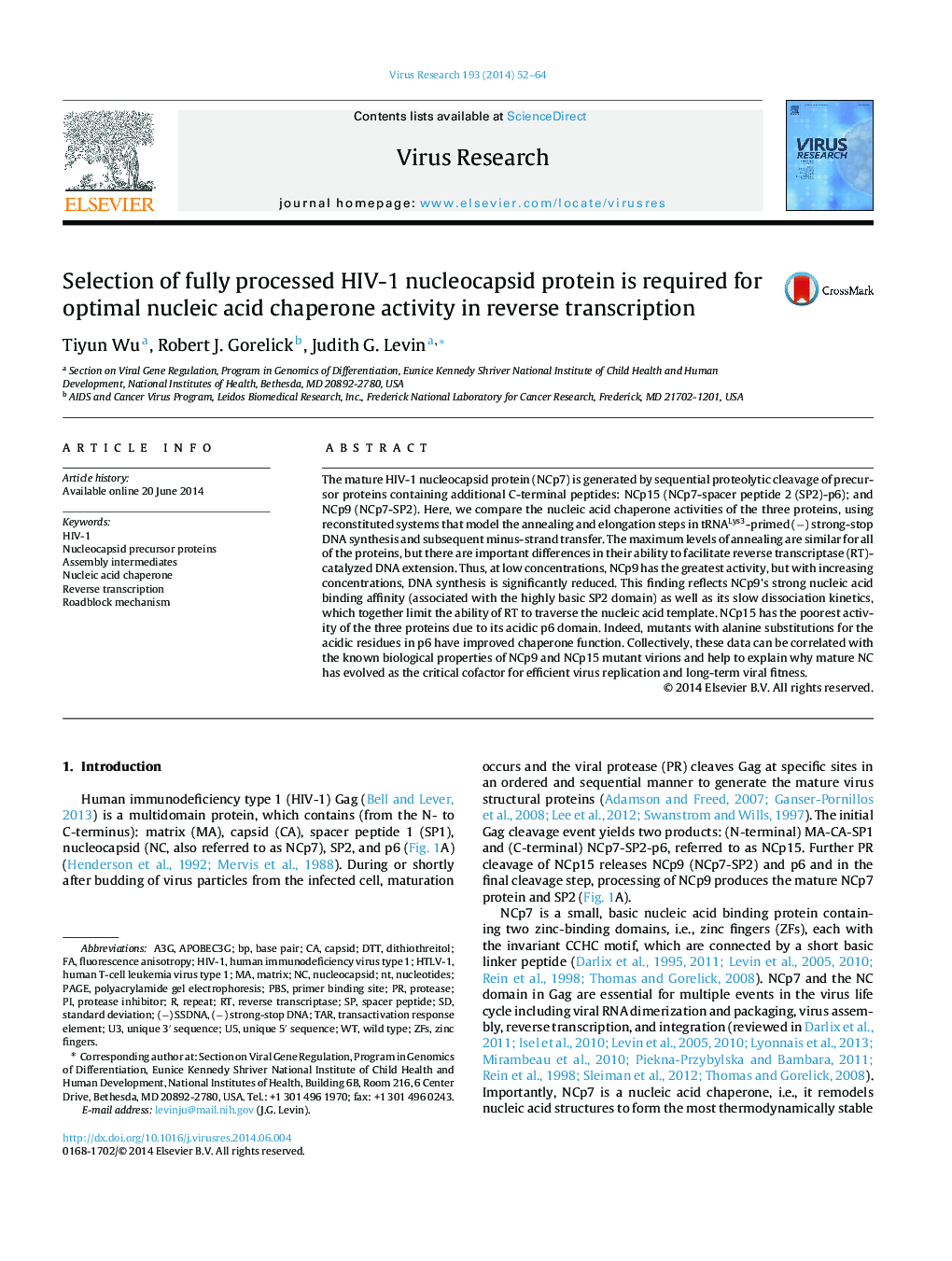| Article ID | Journal | Published Year | Pages | File Type |
|---|---|---|---|---|
| 6142322 | Virus Research | 2014 | 13 Pages |
Abstract
The mature HIV-1 nucleocapsid protein (NCp7) is generated by sequential proteolytic cleavage of precursor proteins containing additional C-terminal peptides: NCp15 (NCp7-spacer peptide 2 (SP2)-p6); and NCp9 (NCp7-SP2). Here, we compare the nucleic acid chaperone activities of the three proteins, using reconstituted systems that model the annealing and elongation steps in tRNALys3-primed (â) strong-stop DNA synthesis and subsequent minus-strand transfer. The maximum levels of annealing are similar for all of the proteins, but there are important differences in their ability to facilitate reverse transcriptase (RT)-catalyzed DNA extension. Thus, at low concentrations, NCp9 has the greatest activity, but with increasing concentrations, DNA synthesis is significantly reduced. This finding reflects NCp9's strong nucleic acid binding affinity (associated with the highly basic SP2 domain) as well as its slow dissociation kinetics, which together limit the ability of RT to traverse the nucleic acid template. NCp15 has the poorest activity of the three proteins due to its acidic p6 domain. Indeed, mutants with alanine substitutions for the acidic residues in p6 have improved chaperone function. Collectively, these data can be correlated with the known biological properties of NCp9 and NCp15 mutant virions and help to explain why mature NC has evolved as the critical cofactor for efficient virus replication and long-term viral fitness.
Keywords
PBStransactivation response elementZFSDTTA3GPAGEnucleocapsidHTLV-1APOBEC3G(−) SSDNANucleic acid chaperonepolyacrylamide gel electrophoresisstandard deviationZinc fingersFluorescence anisotropyTarReverse transcriptaseRepeatbase pairdithiothreitolreverse transcriptionPrimer binding siteMatrixProtease inhibitorwild typeNucleotidesHIV-1Human T-cell leukemia virus type 1Human immunodeficiency virus type 1ProteaseCapsid
Related Topics
Life Sciences
Immunology and Microbiology
Virology
Authors
Tiyun Wu, Robert J. Gorelick, Judith G. Levin,
